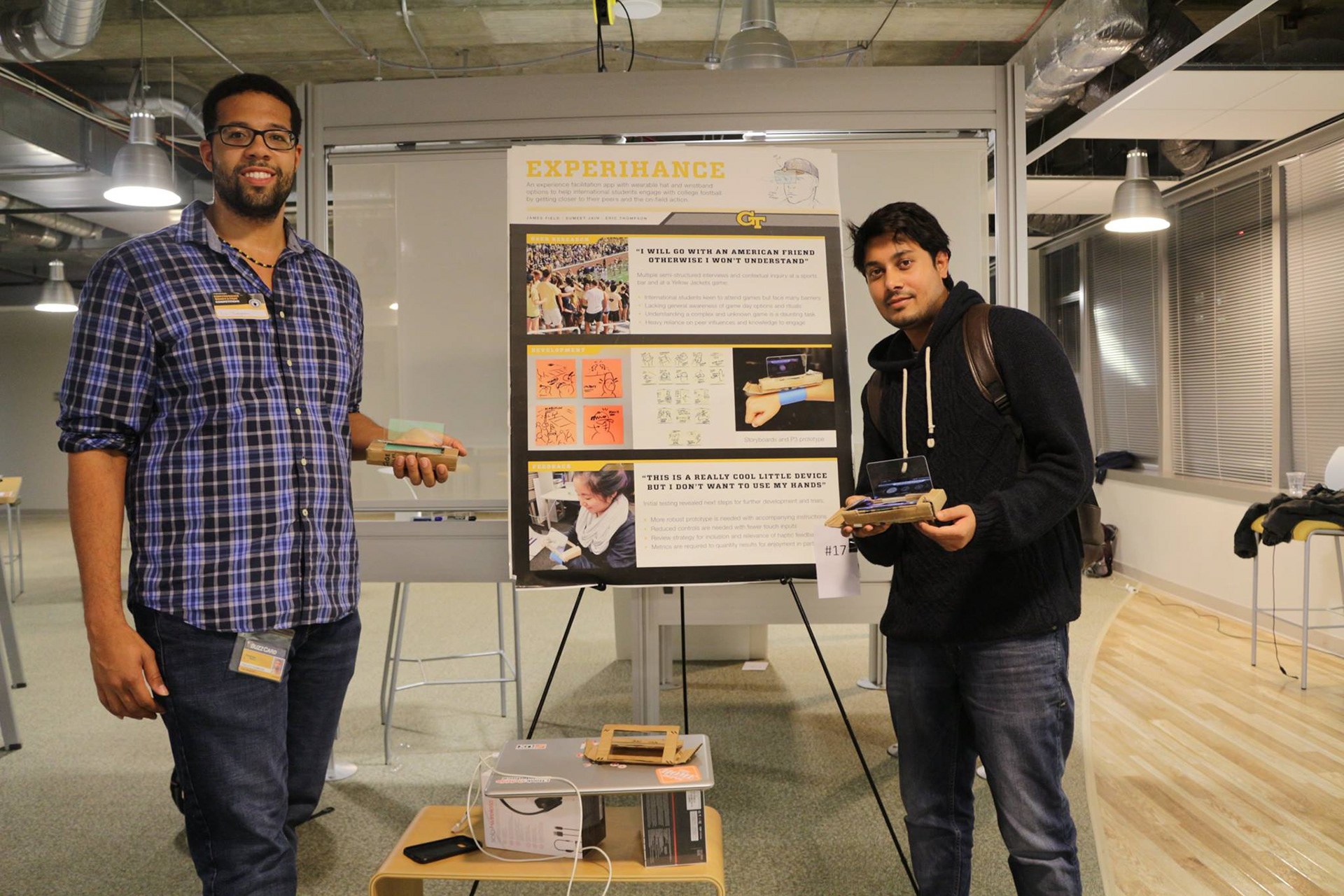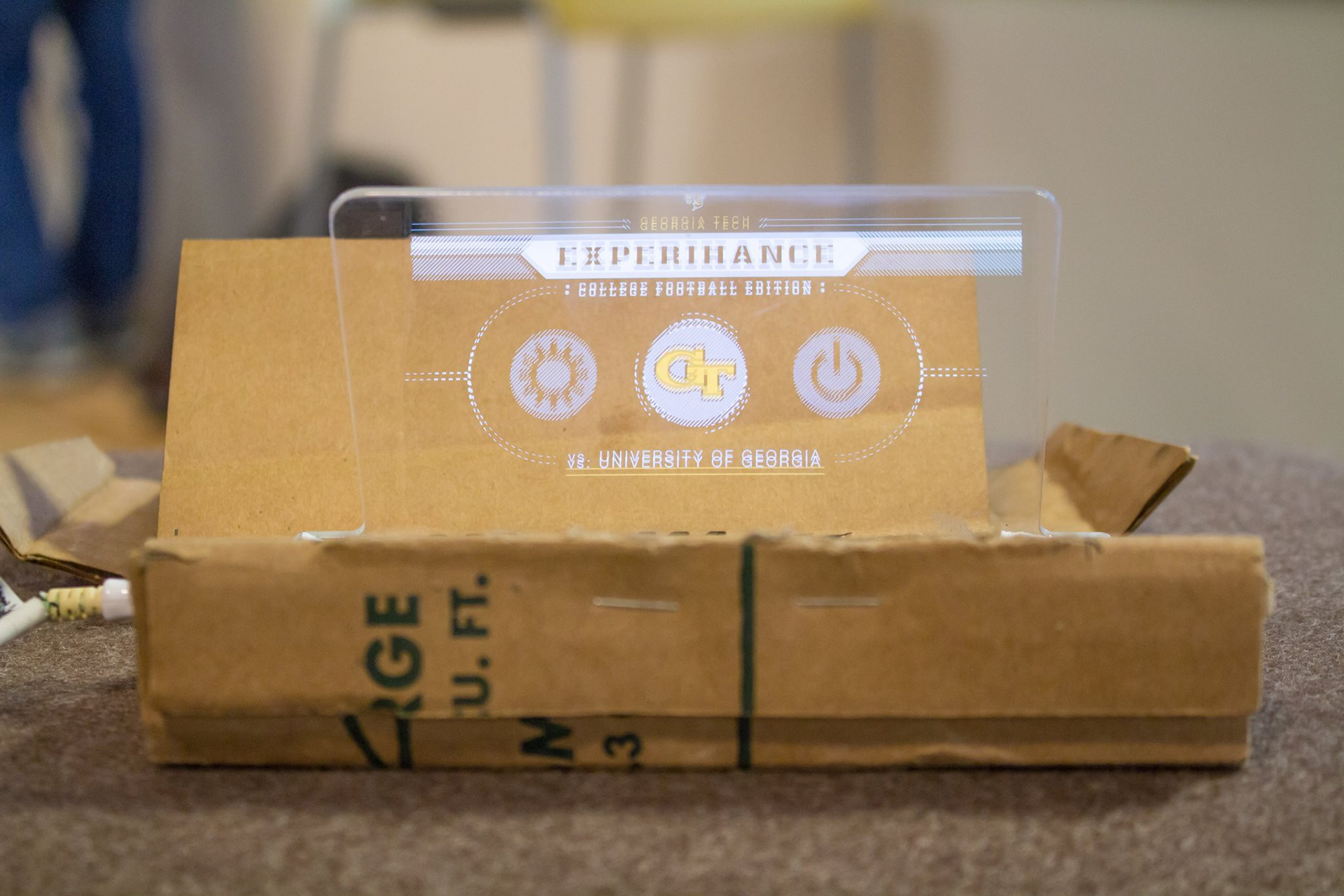This project was my first project in my Human Computer interaction class, familiarizing us with the process of User-Center-Designed.
It represented change of thinking for many individuals coming from either a scientific methodology or idea first background. Our assigned theme was "Quantified Campus".
We decided to explore the space of live entertainment optimization, particularly for individuals who a likely to experience the largest cultural gap.

User Research
We selected the design space of international students and cultural gaps they may experience. During preliminary interviews, football was one of the most consistently mentioned topics. International students also associated large entertainment events with American culture.
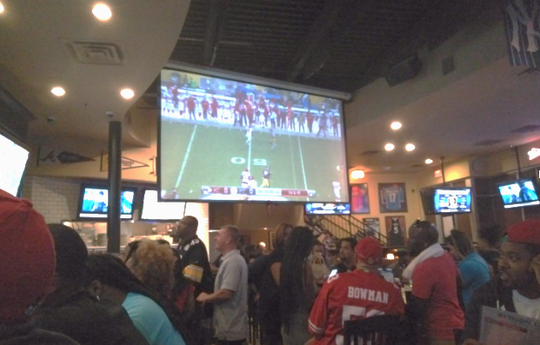

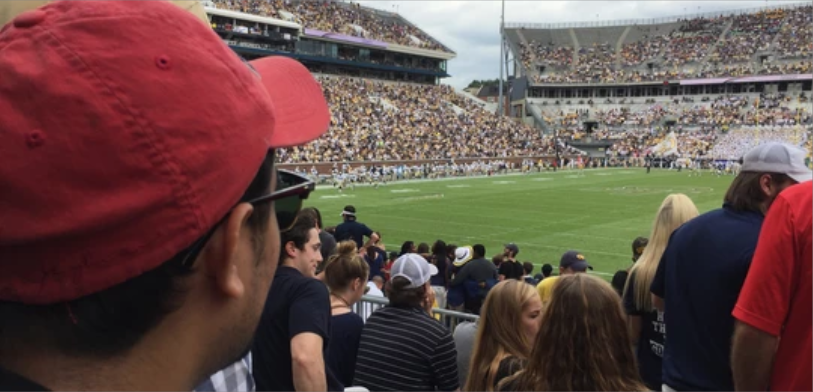
Task Analysis
A task analysis involving an international student was done at a popular bar during Sunday Night Football. The subject had no experience with football games and was in for a shock. Some Findings are below.
Open minded approach to the situation allowed new experiences & suggestions
Engaging in unprompted conversations enabled additional insights
Engaging in unprompted conversations enabled additional insights
Contextual Research
Subsequent Research was done at an actual Georgia Tech Football Game. Below are a few of our findings.
The entry process into the stadium was confusing and seat location was not intuitive.
The participant had to constantly inquire about what was occurring on the field due to lack of understanding and clarity.
The subject expected to make more friends during the event but felt people isolated themselves.
Synthesis
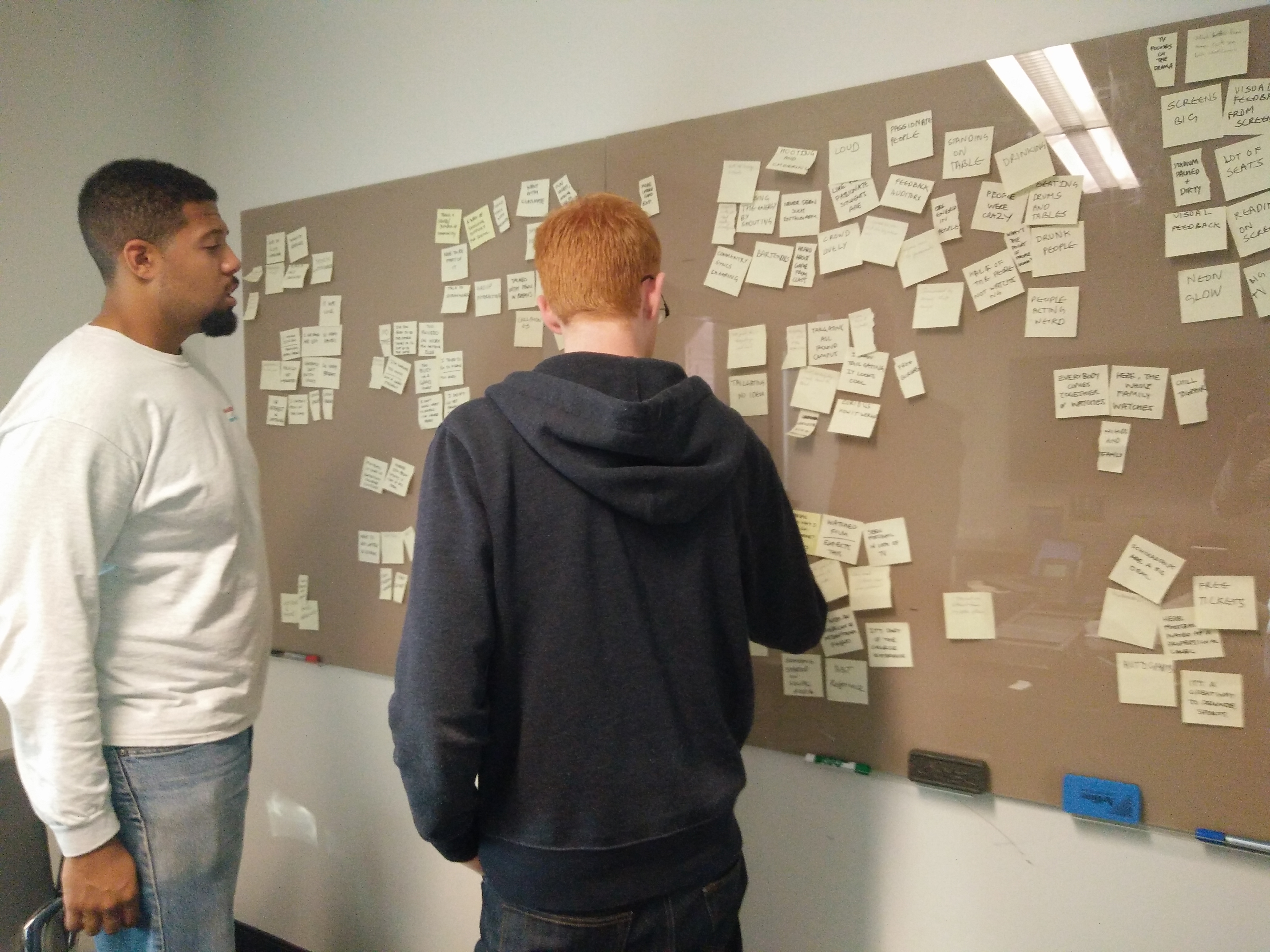
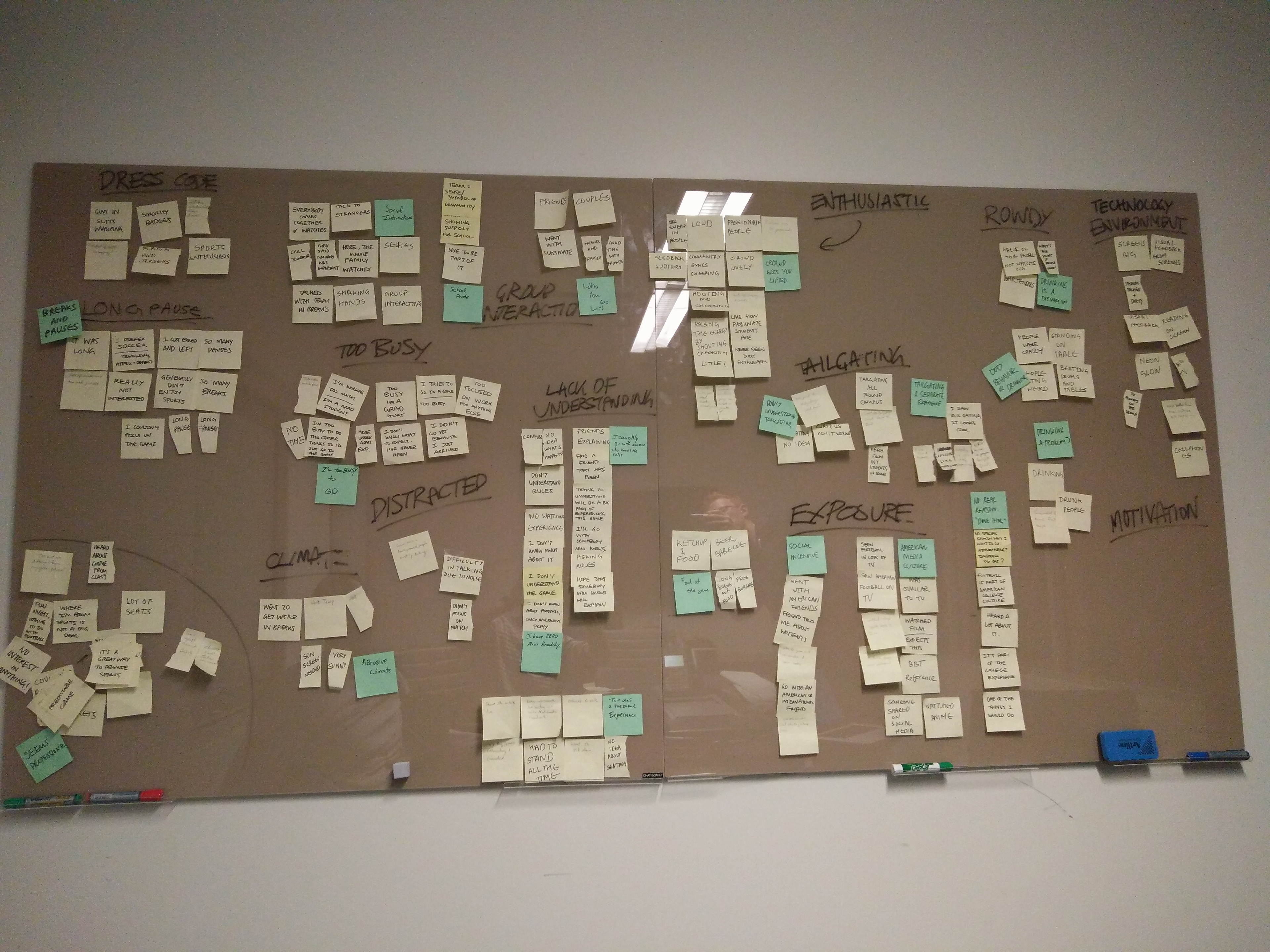
Our synthesis session summed up all our research in a massive affinity diagram to help us draw out any remaining findings and insights, key ones listed below:
Climate(temperature/weather) was moderately important to overall experience.
Climate(temperature/weather) was moderately important to overall experience.
Lack of understanding greatly impacted quality of experience.
Frequent pauses in game play made the event boring.
First time attendees were expecting to be more social with surrounding strangers.
Design Decisions
After our interpretation session we used an idea-smashing brainstorming technique to come up with ideas. Bonding with people by getting closer to the football game was selected as a design prompt.



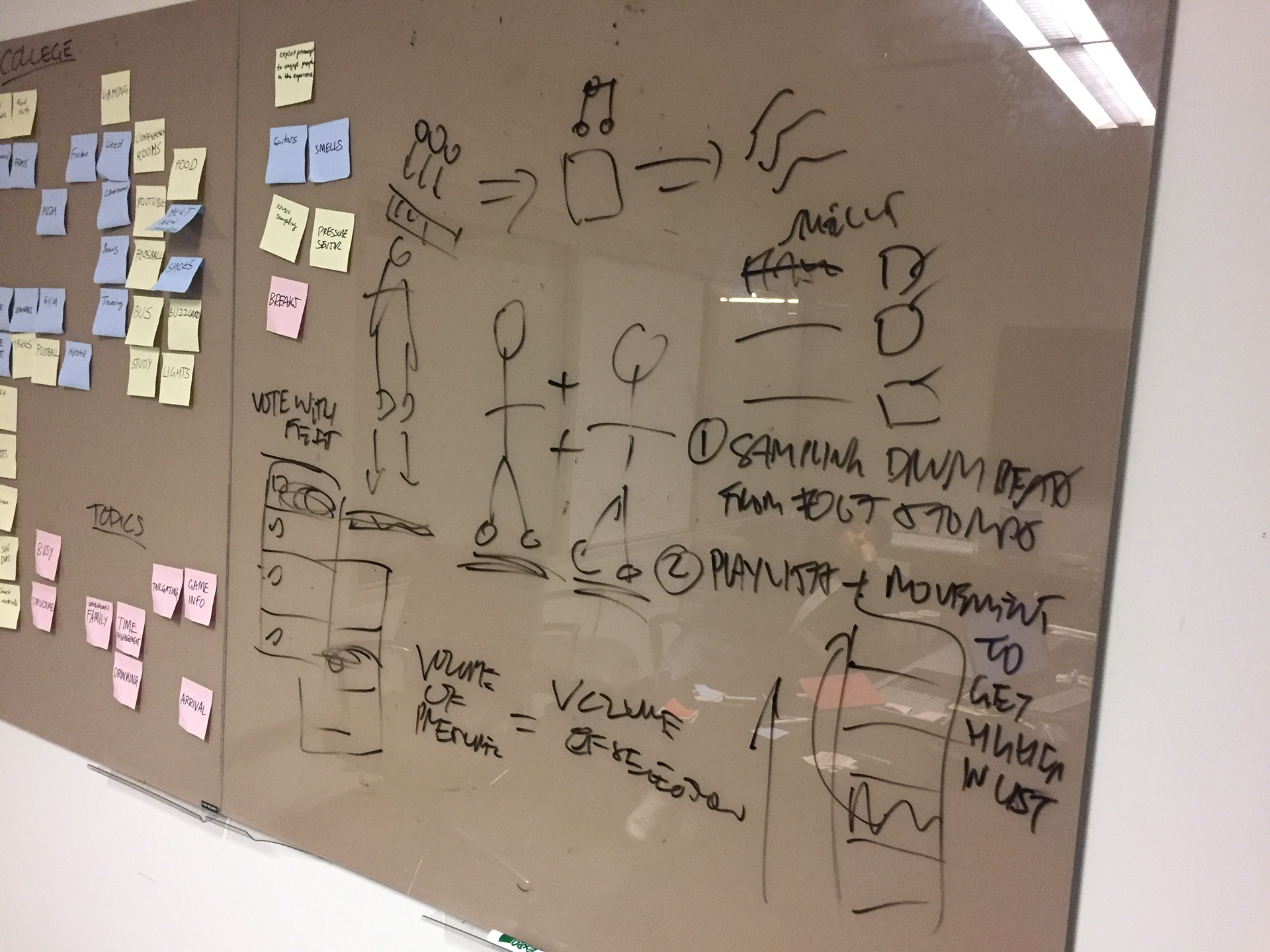
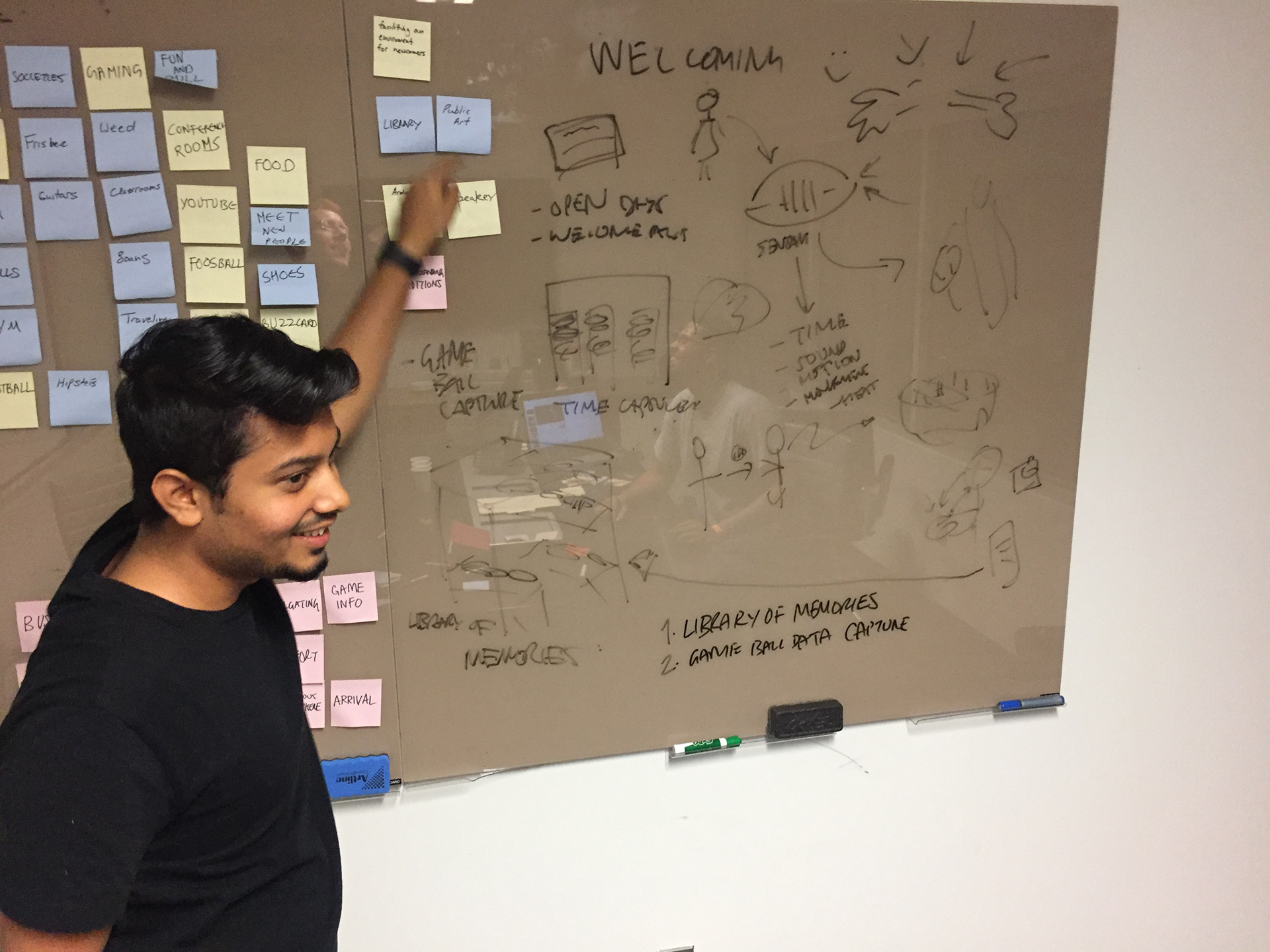
Insights and Interest topics from our research were combined with technology and college-related-word clouds. We each took turns picking random post-its and coming up with design ideas that incorporated elements from the various notes. Here are a few.
Tailgate exchange program where newbies can enjoy the experience with regulars.
Interactive art display full of memory visualizations generated by actual football fans.
Virtual stadium where you can always attend the game with your loved ones or friends without being physically present..
Ideas
Idea 1:
The first involved using a no-frills cardboard ( or other disposable material ) AR wearable. This would allow users to overlay alternative views, player views, and message boards while watching the game.
Idea 2:
The second idea was a beach ball that could be hit around the crowd and record live video, photos, and audio data. That data would then be posted to a social media stream instantly that fans present could interact with.
Idea 3:
The last idea involved a wearable ( most likely a t-shirt or hat ) that would provide haptic feedback from on-field game-play or people around
The Solution
Our solution was a platform that could be customized to fit a variety of live cultural events. But
Physical Prototyping

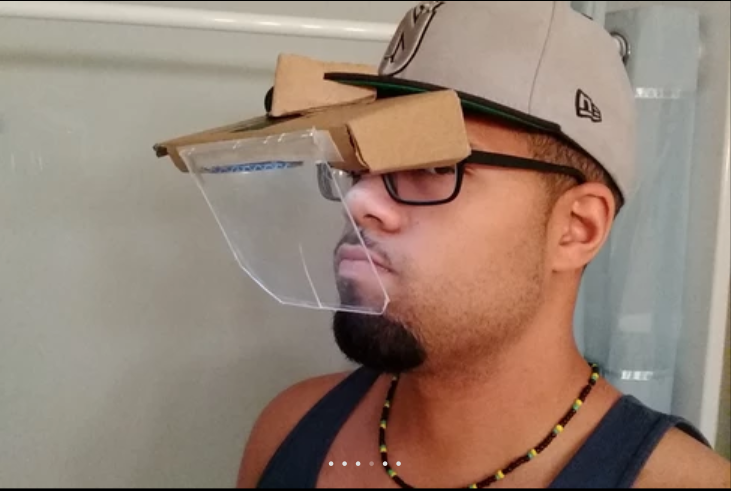
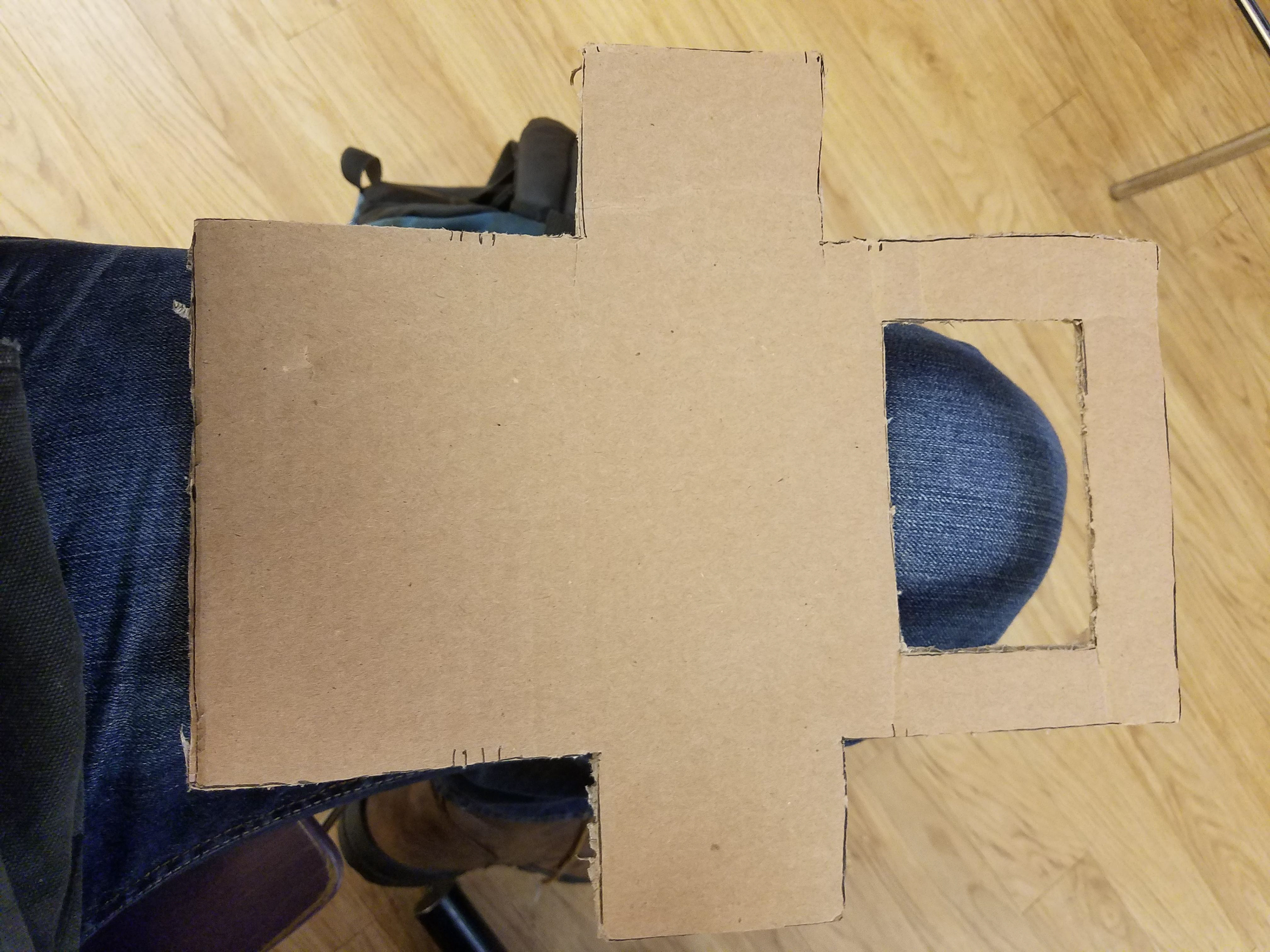

we designed a low-cost HUD apparatus that could be folded out of the game ticket. This would be compatible with any phone, and would facilitate the unique functionality of the Experihance platform without taking users out of the event.
This system was inspired by google cardboard, but evolves it, coming in a flatpack form factor and leverage Augmented Reality vs. Virtual Reality
Digital Platform Prototyping


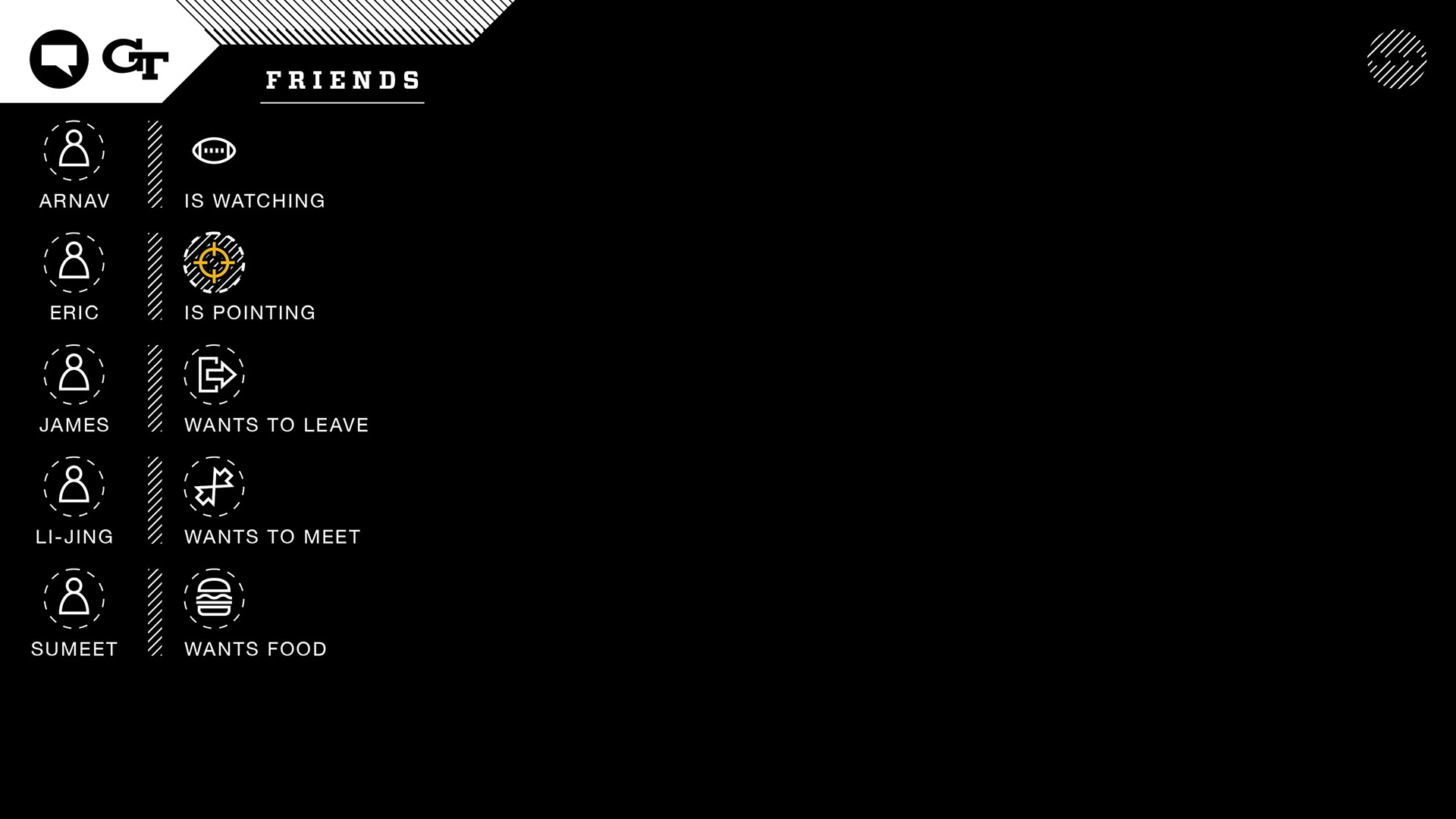
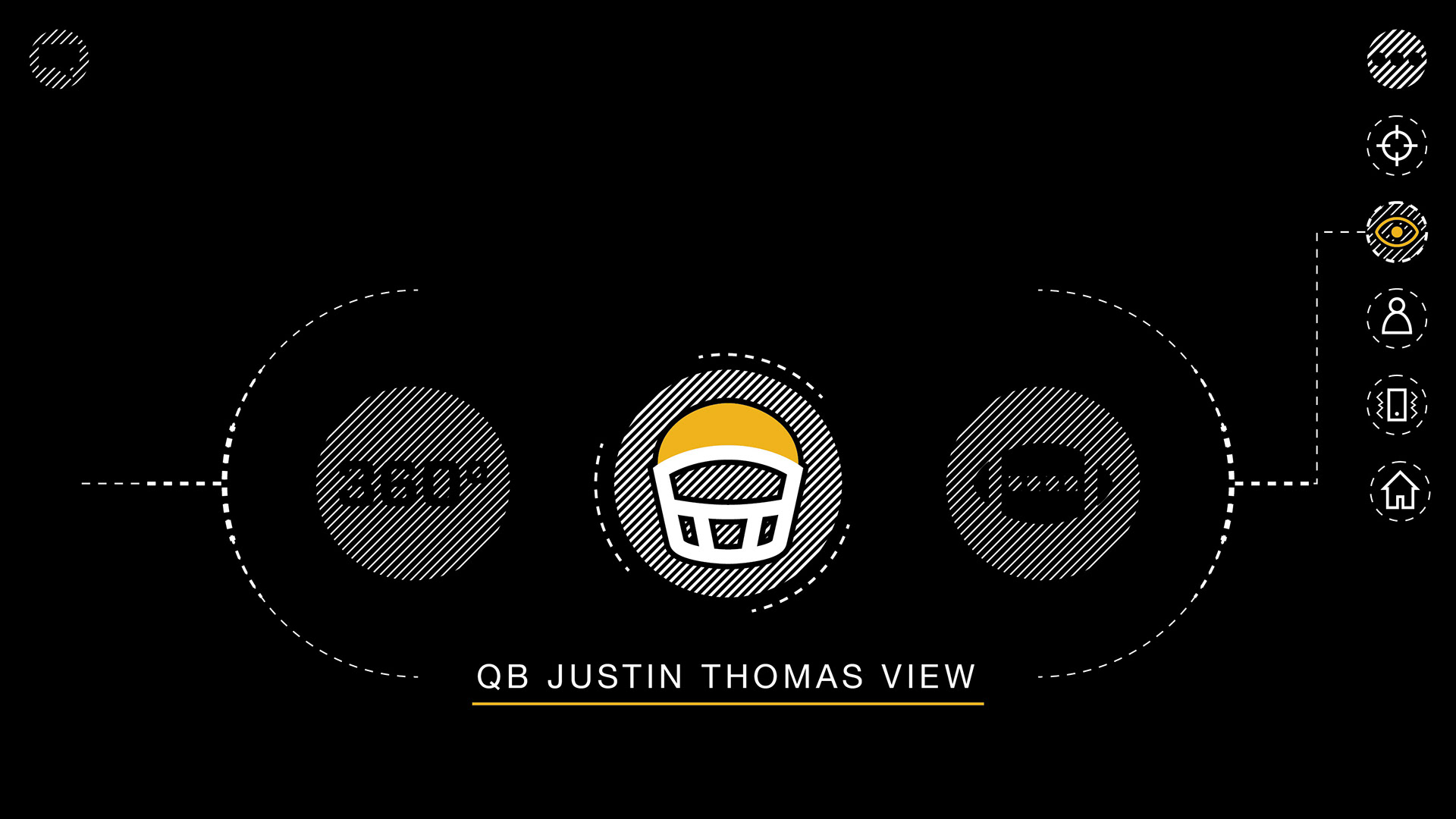
The Experihance platform facilitates a co-located social network around these events. It would also offer experience/view transferring to provide various perspectives and understand of events newcomers are not familiar with. We proposed that giving users a quarterbacks view, for example, would increase understanding.
The digital platform was the main channel by which we solved the problems discovered in research, but we felt that incorporating a physical component would serve a promotional
User Testing
User Testing aimed to evaluate our application in 3 ways.
The first test evaluated user reaction to and ability to assembly the physical component.

While users did say they wished there was an image to reference because assembly was not completely intuitive, they expressed that they thought the system was very clever and cool.
The second test was a usability and heuristic analysis of the platform UI.

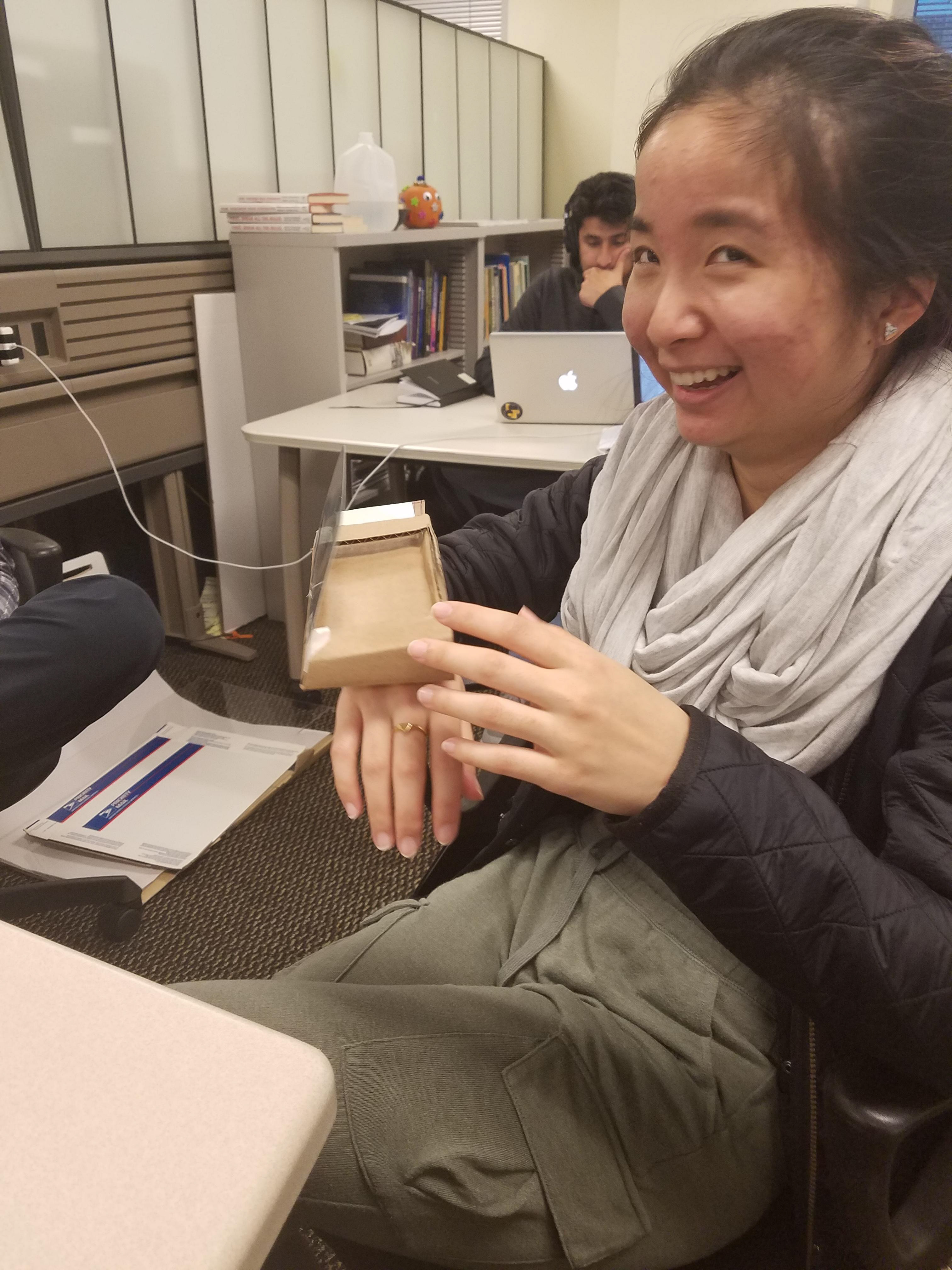
While navigational was a not the easiest for the user, they expressed that the design of the UI was very clear and aesthetic. The Screen prototypes were intentionally designed with black backgrounds to facilitate the AR projection of the cardboard apparatus.
The final test evaluated the experience transfer function.

Users watched a series of plays in regular view mode and then re-watched the same plays with the HUD screen displaying the quarterback view. We wanted to determine any increased understanding and enjoyment. Results from this test were inconclusive as there was positive reaction to the concept of seeing what the quarterback was seeing and feeling associated vibration with hits. However, it was not possible to determine how much understanding increased because we uncovered there was an iteraction difficulty when users attempted to focus on both the player-view and the normal game-view.
Presentations
We presented on Experihance in a symposium and competition. The first was the HCI symposium, which all groups in the program presented their teams projects. The second was the Convergence Innovation competition in the Fall of 2017. We had positive reaction to the AR apparatus as a service novelty. People liked the idea of a very cheap AR solution that could theoretically be given away for free.
Fall 2016 HCI Presentation



Fall 2017 Convergence Innovation Competition.
1st Place Winners in Category
1st Place Winners in Category
